Just under 1500 years ago something terrifying happened to the world’s climate something nobody could understand. The sun began to go dark rain, the color of blood poured from the skies, clouds of fine dust enveloped the earth, winter gripped the land for two years and then came drought famine plague death, whole cities were wiped out. Civilizations crumbled and nobody knew what had happened. It was a catastrophe, a catastrophe that affected millions and millions of people all around the world, but what was it?

The mid 6th century catastrophe was the most important date in the history of the past 2000 years. It really did lay the foundations of the world we live in today for five years in the attic of his unassuming suburban home. David Keys a writer on history and archaeology has immersed himself in a worldwide investigation. He’s consulted over 80 experts on drought famine floods cosmic and ecological disasters epidemics and ancient wars. He scoured the annals and chronicles of the 6th and 7th centuries a.d from all over the world. His book tells the story of a catastrophic climatic event buried in the heart of the dark ages which Keyes believes totally altered the course of history.

The mystery which has so tantalized him began at a conference on archaeology in 1994. One particular talk really amazed me it was a lecture given by a dendrochronologist an expert in tree rings called mike bailey and he was giving a a lecture about how all the tree rings in the world really went haywire somewhere in the middle of the sixth century.
Thirty years ago when he was a physics student professor, Mike Baillie of Queen’s University in Belfast pioneered a revolutionary idea in a totally different field to his own. He devised a computer system which would put trees to scientific use realized that trees had the potential to become the silent witnesses of the world’s changing weather.

Going back thousands of years every year, trees put on a new layer of growth within the bark. These layers show up as rings. Every ring varies in width a wide ring is a year of good weather. A narrow ring a bad year the pattern of wide and narrow rings is distinctive. Each ring sequence can be matched with the rings of previously filled trees and precisely dated the computer program which matches the patterns of the rings. It was Michael Baillie’s invention and it’s now used by laboratories all over the world over the last 30 years in northern Europe. A variety of people a variety of laboratories have set out and and worked back from known filling dates taking you back through long ring records of living trees and then overlapping to patterns from historic buildings for example fitting together these sort of long ring patterns going back hundreds and eventually thousands of years it’s by painstakingly analyzing and overlapping the patterns of older and older trees that a complete unbroken record of tree.
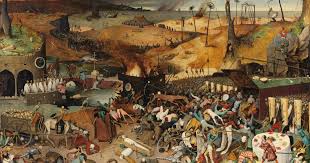
Ring widths is built up so you’ve got this sample with its very clear character change just here when they processed another sample from the same building they could see that it came originally from the same parent tree and you could extend the pattern back from the first sample right back through to the beginning of the sample.

Many many samples have to be analyzed by Mike Baillie’s computer program to get the average width for every year. It took 14 years to build up the complete data just for Irish oaks. This tree record is now telling Irish scientists what the weather was like every single year for the last seven and a half thousand years. If you think about that that’s an astonishing position to be in, we can interrogate for any calendar year in the last thousands of years what trees thought of their growth conditions. Over a big geographical area that information simply didn’t exist before, but what we’re interested in is why did this tree go narrow at this point and narrow again at this point. What is the environmental information which is actually stored in the patterns?
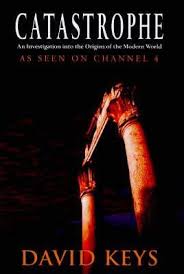
David Keyes went to Ireland to see for himself the mysterious 6th century event stored in Mike Bailey’s tree rings year shuffle through. Here it was 10 years ago that Mike noticed his oak rings went abnormally narrow in the mid 6th century a.d signs that something very powerful was stopping the trees growing extremely narrow.
Baillie then told Keys of similar evidence from Europe particularly from a colleague in Finland. He sees a really abrupt drop in 536 a bit of a recovery in 537 and 38 and then it drops dramatically into 542 so you begin to see a pattern and that pattern wasn’t just confined to Ireland and Finland by contacting other labs. David found that wherever you looked in the world in the mid 6th century, trees were having a terrible time foxtail pine rings from the sierra nevada mountains in california showed that 535, 536 and 541 were three of the four worst years in the past two millennia.
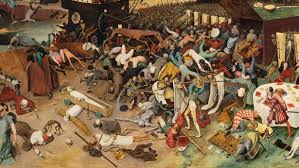
In Chile, fitzroya trees record the greatest summer growth drop of the past 1600 years, In siberia a 20-year decline in tree growth in the 530s and 540s was the most serious in the past 1900 years so why were the trees not growing? Was it dark cold natural pollution or drought? For Mike Baillie the answer lay in a microscopic examination of a 536 German oaks. The tree puts on a line of these large spring vessels and it then puts on fine cell wood during the the summer and goes dormant. Then it does again the next year so each year’s growth is from the beginning of one line of vessels to the beginning of the next and in this year the year 536.

The vessels are enormously small and they’re also distributed right through the summer so it’s widely reckoned that this phenomenon is due to frost damage. The implication from this kind of worldwide evidence was that the weather was extremely cold for long periods in the mid 6th century.
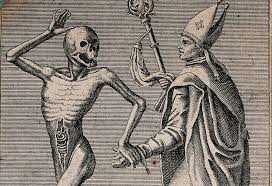
Mike Baillie also had archaeological evidence from Ireland which backs this up much of the wood that he dated came from Crannocks Wooden island forts that people built as refuges in times of trouble and clan warfare.
Baillie took keys to the remains of one in Loch Catherine near Omar to look at the submerged timbers that once formed the outer wall. My first inkling that there was something going on came from timbers specifically from sites like this the mid 6th century, marks the beginning of the construction of Crannogs. Baillie believes that this was due to the hostile conditions stemming from the climatic disaster when you look at the overall picture there seems to be about a decade of really bad conditions. Starting in 536 and running on to the mid 540s at least the implication from lots of bits of evidence, is that it was extremely cold and that this reduced sunlight and cold caused crop failures.

So, basically people in an area like this were would be forced back onto non-agricultural produce they would be forced to fish. They would be forced to to hunt and that would put a lot of strain on the population which was used to having agricultural produce to see them through the winters. For example uso things would have been fairly bleak here. Keys was now hooked not just by the tree-ring evidence that it was cold but also by the fact that people seem to be suffering too his next step. He wanted to see whether there were any written accounts from the time of the climate falling apart. By far the greatest civilization of the sixth century was the Roman Empire. Rome had been sacked a hundred years earlier by huns and goths but now the Empire was resurgent with a new capital in Constantinople.
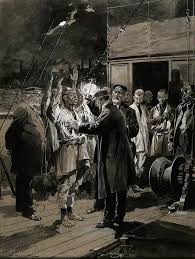
Once again it was the center of Mediterranean culture by contacting classical scholars. Keys unearthed many highly significant roman accounts of bizarre weather. One eyewitness a Syrian bishop John of Ephesus describes the extraordinary events during the years 535 and 536 a.d. There was a sign from the sun the like of a witch had never been seen or reported before the sun became dark and its darkness lasted for 18 months.

Each day it shunned for about four hours and still this light was only a feeble shadow. Everyone declared that the sun would never recover its full light again.
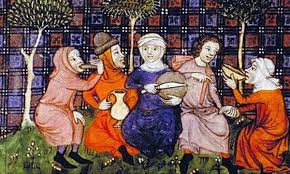
Anyways, hope you enjoy my efforts, even though is highly ammateur, until the next time!
